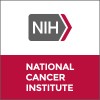
Seneca Valley Virus-001 and Cyclophosphamide in Treating Young Patients With Relapsed or Refractory...
Adrenocortical CarcinomaGastrointestinal Carcinoid Tumor4 moreRATIONALE: Seneca Valley virus-001 may be able to kill certain kinds of tumor cells without damaging normal cells. Adding low dose cyclophosphamide (in part B of study) may help to kill even more tumor cells. PURPOSE: This phase I trial is studying the side effects and best dose of Seneca Valley virus-001 in treating young patients with relapsed or refractory neuroblastoma, rhabdomyosarcoma, or rare tumors with neuroendocrine features.

N2007-03: Vorinostat and 131-I MIBG in Treating Patients With Resistant or Relapsed Neuroblastoma...
NeuroblastomaRATIONALE: Vorinostat may stop the growth of tumor cells by blocking some of the enzymes needed for cell growth. Radioactive drugs, such as iobenguane I 131, may carry radiation directly to tumor cells and not harm normal cells. Giving vorinostat together with iobenguane I 131 may kill more tumor cells. PURPOSE: This phase I trial is studying the side effects and best dose of giving vorinostat together with iobenguane I 131 in treating patients with resistant or relapsed neuroblastoma.

High-Dose Chemotherapy With or Without Total-Body Irradiation Followed by Autologous Stem Cell Transplant...
Adult Acute Lymphoblastic Leukemia in RemissionAdult Acute Myeloid Leukemia in Remission59 moreThis pilot trial studies different high-dose chemotherapy regimens with or without total-body irradiation (TBI) to compare how well they work when given before autologous stem cell transplant (ASCT) in treating patients with hematologic cancer or solid tumors. Giving high-dose chemotherapy with or without TBI before ASCT stops the growth of cancer cells by stopping them from dividing or killing them. After treatment, stem cells are collected from the patient's blood or bone marrow and stored. More chemotherapy may be given to prepare for the stem cell transplant. The stem cells are then returned to the patient to replace the blood forming cells that were destroyed by the chemotherapy.

N2004-06: Irinotecan and Vincristine With 131I-MIBG Therapy for Resistant/Relapsed High-Risk Neuroblastoma...
NeuroblastomaRATIONALE: Radioactive drugs, such as iodine I 131 metaiodobenzylguanidine (MIGB), may carry radiation directly to tumor cells and not harm normal cells. Drugs used in chemotherapy, such as irinotecan and vincristine, work in different ways to stop the growth of tumor cells, either by killing the cells or by stopping them from dividing. Giving iodine I 131 MIGB together with irinotecan and vincristine may kill more tumor cells. PURPOSE: This phase I trial is studying the side effects and best dose of iodine I 131 MIGB when given together with irinotecan and vincristine in treating young patients with resistant or relapsed high-risk neuroblastoma.

Enzastaurin in Treating Young Patients With Refractory Primary CNS Tumors
Brain and Central Nervous System TumorsNeuroblastomaRATIONALE: Enzastaurin may stop the growth of tumor cells by blocking some of the enzymes needed for cell growth and by blocking blood flow to the tumor. PURPOSE: This phase I trial is studying the side effects and best dose of enzastaurin in treating young patients with refractory primary brain tumors.

A Study of Pemetrexed in Children With Recurrent Cancer
OsteosarcomaMedulloblastoma8 moreTo determine the response rate of pemetrexed given every 21 days for the treatment of children with relapsed or refractory osteosarcoma, Ewing's sarcoma/peripheral primitive neuroectodermal tumors (PNET), rhabdomyosarcoma, neuroblastoma, ependymoma, medulloblastoma/supratentorial PNET or non-brain stem high-grade glioma.

Protracted Etoposide During Induction Therapy for High Risk Neuroblastoma
NeuroblastomaHigh-risk neuroblastoma is an aggressive childhood cancer that shows up as a lump or mass in the belly or around the spinal cord in the chest, neck, or pelvis. Often the tumor has spread around the body to the bones or to the soft center of the bone, called the bone marrow. High-risk neuroblastoma often responds to treatment at first, but it frequently comes back and may be even more difficult to treat. Chemotherapy (drug treatments for cancer) is usually given at high doses in short bursts (3 to 5 days) followed by a few weeks of rest and recovery. This burst and recovery is called a "cycle" and usually takes about 21 days. Some scientists and physicians have tried to give chemotherapy at lower doses for more days, called "metronomic" chemotherapy. This method of giving chemotherapy has been used to treat neuroblastoma that has failed more standard types of treatment (relapsed neuroblastoma) and has shown some promise for those patients. One of the reasons it may work is by killing the blood vessels that feed the tumor as well as killing tumor cells themselves (the way that burst chemotherapy works). We think that giving a burst of chemotherapy together with metronomic therapy may kill the tumor while decreasing the side effects that we have seen in the past. Treatment for high risk neuroblastoma usually occurs in 3 stages: induction, consolidation, and maintenance. During the induction phase, patients will receive chemotherapy and possibly more surgery to get rid of most of the tumor cells. Most of the chemotherapy drugs during induction will be given in the standard burst method. One of the chemotherapy drugs, etoposide, will be given in lower, metronomic doses. The doctors will study how the tumors respond and the side effects patients have. After induction most childrens' tumors will have disappeared, also called remission. These children will receive the second stage of treatment called consolidation. During this stage, subjects will receive radiation treatments to the tumor and then higher doses of chemotherapy. Because of the side effects of the high doses of chemotherapy, we will collect and store some special blood cells (called hematopoietic stem cells) early in treatment and keep them frozen. After the high doses of chemotherapy, these cells will be thawed and given to the subject. . This is called hematopoietic stem cell transplant (HSCT). The final stage of treatment, called maintenance, consists of a drug taken by mouth for 6 months. Surgery to remove large, or bulky, tumors is a standard part of treatment for high risk neuroblastoma. A few children can have their main tumor removed before chemotherapy, but most require the tumor to shrink first. Surgery has usually been scheduled for after 3 to 5 cycles of therapy, but no one really knows how quickly the tumors are ready to come out. Because chemotherapy has significant side effects that can change the risks of surgery, we will study how early surgeries to remove tumors can happen. This study is being done to evaluate the outcomes of disease response and survival in children with high risk neuroblastoma treated on this regimen.

A Pilot Study of Tumor Cell Vaccine for High-risk Solid Tumor Patients Following Stem Cell Transplantation...
SarcomaNeuroblastoma1 moreLocalized solid tumors such as, sarcoma, neuroblastoma, and Wilms' tumor, can generally be effectively treated with a combination of surgery, radiation and chemotherapy. However, patients with metastatic or relapsed disease have a very poor prognosis. New approaches to the management of these difficult groups of patients are needed. There is evidence to suggest that solid tumors may be good candidates for immunotherapy approaches. In fact, recent experimental evidence indicates that the period of lymphopenia that occurs after stem cell transplant may be an opportune time to use an immunotherapy treatment approach. In light of the very poor prognosis of young patients with advanced solid tumors, this treatment approach warrants further investigation.

Continuous Hyperthermic Peritoneal Perfusion (CHPP) With Cisplatin for Children With Peritoneal...
Peritoneal NeoplasmsRetroperitoneal Neoplasms9 moreThere has been no successful treatment of diffuse peritoneal metastasis or carcinomatosis, in childhood tumors. Once this advanced stage of disease is evident, survival is measured in weeks. The selective lethal effect of supranormal temperatures on neoplastic cells and the additive or synergistic effect of combining chemotherapy has been well established in adult clinical trials using continuous hyperthermic peritoneal perfusion (CHPP) for advanced peritoneal adenocarcinoma of gastrointestinal origin, ovarian carcinoma and mesothelioma. This phase I study will evaluate the safety of continuous hyperthermic peritoneal perfusion with escalating doses of intraperitoneal cisplatin in the treatment of children with refractory tumors limited to the abdominal cavity. If tumors are outside the abdominal cavity, the tumors must be able to be controlled. Since CHPP has potential to improve outcome of children with peritoneal and retroperitoneal metastases, this study will evaluate the safety of elevated temperature (40oC) with intraperitoneal cisplatin chemotherapy. Primary Objectives: To determine the MTD and dose-limiting toxicity of intraperitoneal cisplatin given in combination with CHPP as a 90 minute perfusion in children with advanced peritoneal and retroperitoneal solid tumors To determine the safe and tolerable dose of CHPP with cisplatin to be used in Phase II trials To determine the pharmacokinetics of intraperitoneal cisplatin platinum given with CHPP as a 90 minute abdominal perfusion (Optional)

Adavosertib and Irinotecan Hydrochloride in Treating Younger Patients With Relapsed or Refractory...
Central Nervous System Embryonal Tumor With Rhabdoid FeaturesCentral Nervous System Embryonal Tumor15 moreThis phase I/II trial studies the side effects and best dose of adavosertib and irinotecan hydrochloride in treating younger patients with solid tumors that have come back (relapsed) or that have not responded to standard therapy (refractory). Adavosertib and irinotecan hydrochloride may stop the growth of tumor cells by blocking some of the enzymes needed for cell growth.
